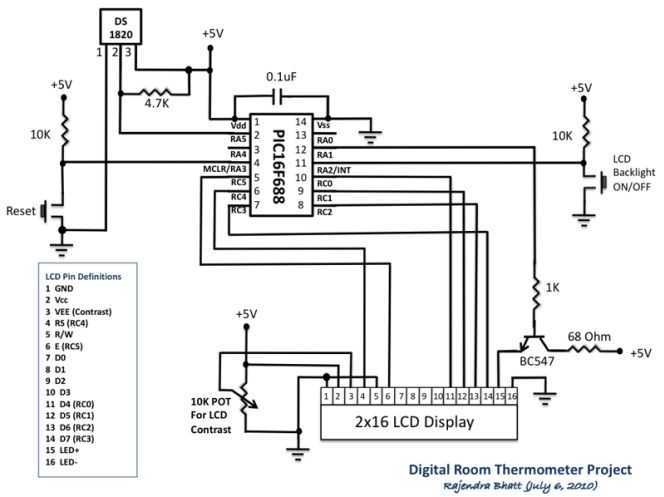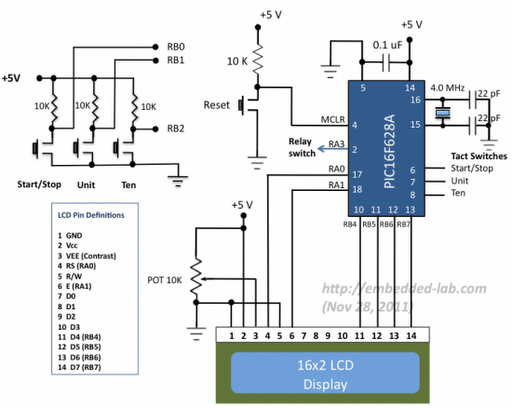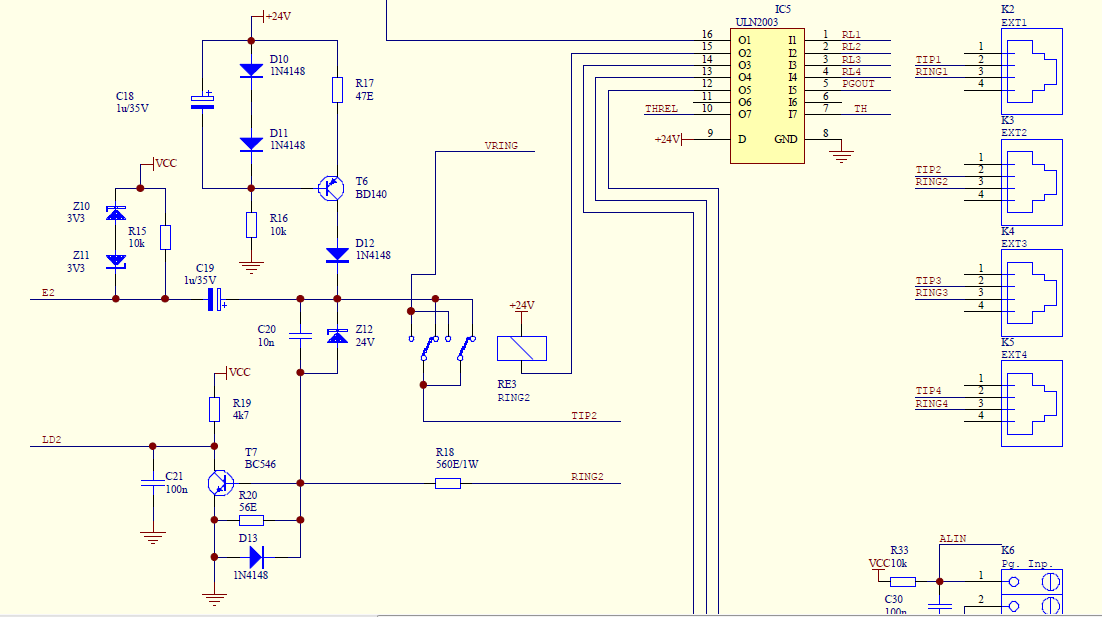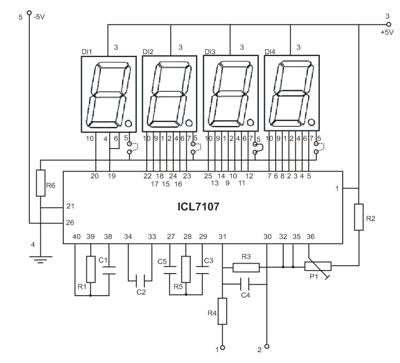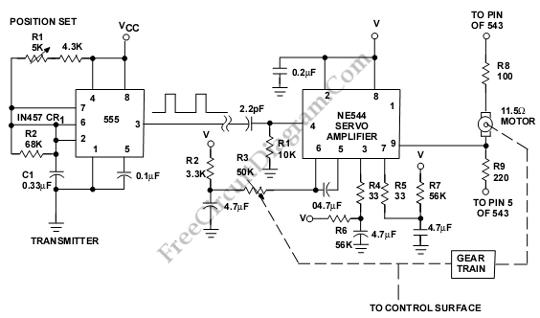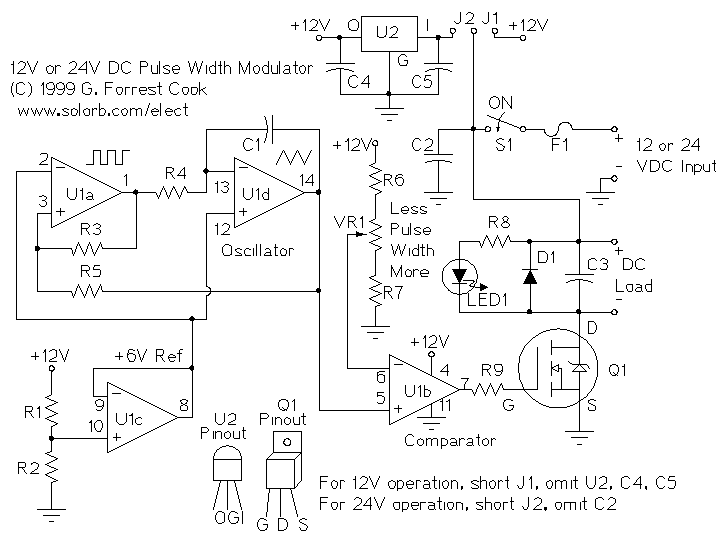
Digital Thermometercum- Controller using AT89s52
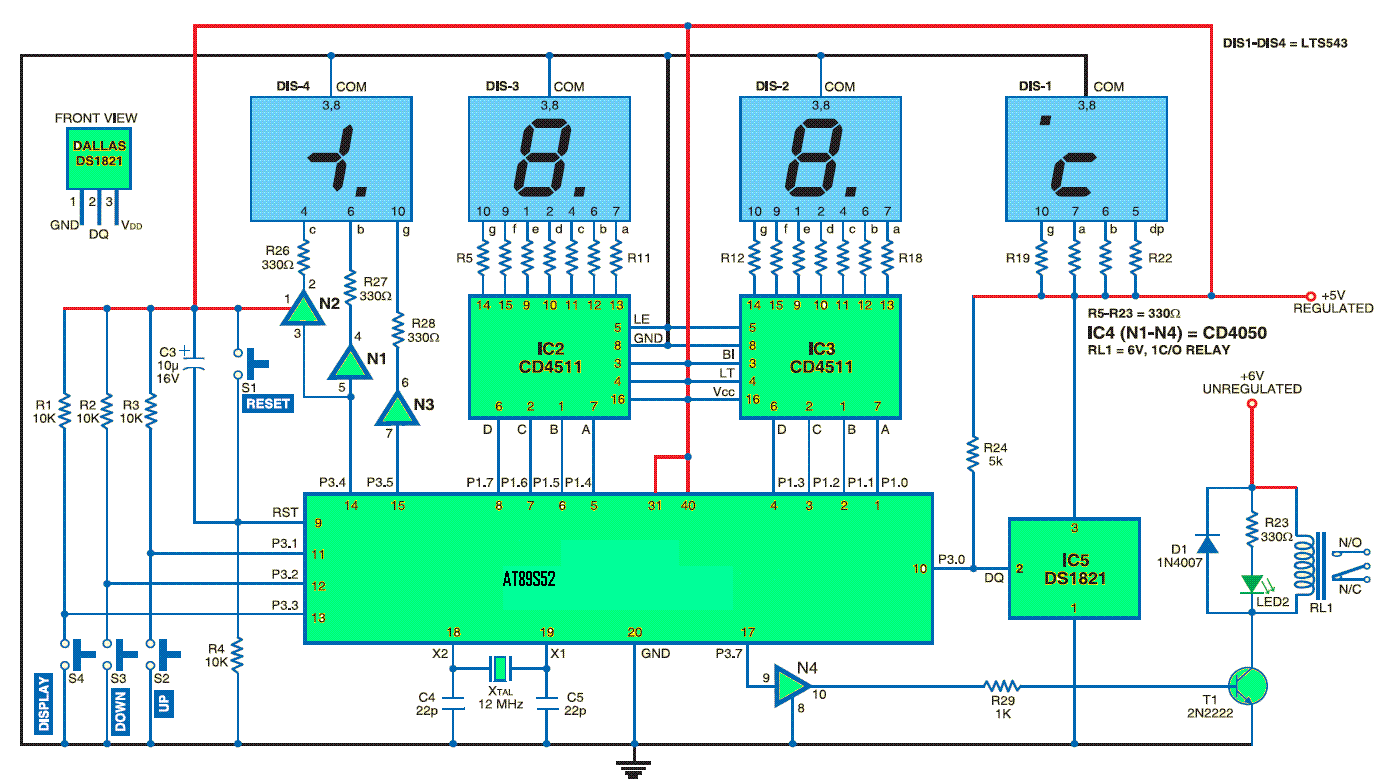
This standalone digital thermometer regulates the temperature of a device based on its requirements. It displays the temperature on four 7-segment displays, with a range from 55 to +125 °C. The core of the circuit is the AT89S52 microcontroller, which oversees all functions. The temperature sensor used is the DS1821 from Dallas Semiconductor. The DS1821 is a precision temperature sensor with an accuracy of one degree, housed in a 3-pin package similar to a transistor, and utilizes a single-wire communication protocol. It can function as a standalone thermostat with user-programmable trip points (set points) or as an 8-bit temperature sensor with a single-wire digital interface. The open-drain DQ pin serves as the output for thermostat operations and as the data input/output (I/O) pin for single-wire communications. This single-wire interface allows user access to the non-volatile memory (EEPROM) for thermostat trip-point registers (TH and TL), as well as the status/configuration register and temperature register. When configured as a standalone thermostat, temperature conversions commence immediately upon power-on. In this mode, the DQ pin activates when the temperature of the DS1821 exceeds the limit set in the TH register and remains active until the temperature falls below the limit set in the TL register. The DS1821 employs Dallas' exclusive single-wire technology.
The circuit design for this standalone digital thermometer incorporates several key components to ensure accurate temperature measurement and control. The AT89S52 microcontroller serves as the central processing unit, managing the overall operation of the thermometer. It is responsible for interpreting the temperature data received from the DS1821 sensor and driving the four 7-segment displays to present the temperature reading clearly to the user.
The DS1821 temperature sensor is connected to the microcontroller via a single-wire interface, which simplifies wiring and reduces the number of pins required for communication. This interface allows the microcontroller to read the temperature data and configure the trip points for the thermostat functionality. The DQ pin is critical in this setup; it not only provides the temperature data but also indicates when the temperature exceeds the predefined thresholds.
The user can program the trip points (TH and TL) through the EEPROM, allowing for flexible temperature control based on specific application needs. The microcontroller can be programmed to monitor the DQ pin continuously, activating the output when the temperature surpasses the upper threshold (TH) and deactivating when it falls below the lower threshold (TL). This feature makes the system suitable for various applications, including HVAC systems, refrigeration units, and industrial temperature control systems.
Power management is also an essential consideration in the design, as the DS1821 begins temperature conversions immediately upon power-on. This ensures that the system is responsive and ready to monitor temperature changes without delay. The use of the AT89S52 microcontroller allows for additional features, such as data logging or integration with other systems, enhancing the functionality of the thermometer.
Overall, this digital thermometer design effectively combines precision temperature sensing with user-friendly control and display features, making it a versatile solution for temperature monitoring and regulation in various applications.This standalone digital thermometer controls the temperature of a device according to its requirement. It also displays the temperature on four 7-segment displays in the range of 55 to +125 °C. At the heart of the circuit is the microcontroller AT89S52, which controls all its functions. IC DS1821 is used as temperature sensor. IC DS1821 Dallas Semiconductor`s IC DS1821 is one-degree precision temperature sensor in a 3-pin pack like a transistor with single-wire communication protocol. It can operate as a standalone thermostat with user-programmable trip-points (set-point) or as an 8-bit temperature sensor with a single-wire digital interface.
The open-drain DQ pin functions as the output for thermostat operation and as the data input/output (I/O) pin for single-wire communications. The single-wire interface lets user access the nonvolatile memory (EEPROM) thermostat trip-point registers (TH and TL), status/configuration register and temperature register.
When configured as standalone thermostat, temperature conversions start immediately at power-on. In this mode, the DQ pin becomes active when the temperature of IC DS1821 exceeds the limit programmed into the TH register, and remains active until the temperature drops below the limit programmed into the TL register. The DS1821 uses Dallas` exclusive single-wire 🔗 External reference
The circuit design for this standalone digital thermometer incorporates several key components to ensure accurate temperature measurement and control. The AT89S52 microcontroller serves as the central processing unit, managing the overall operation of the thermometer. It is responsible for interpreting the temperature data received from the DS1821 sensor and driving the four 7-segment displays to present the temperature reading clearly to the user.
The DS1821 temperature sensor is connected to the microcontroller via a single-wire interface, which simplifies wiring and reduces the number of pins required for communication. This interface allows the microcontroller to read the temperature data and configure the trip points for the thermostat functionality. The DQ pin is critical in this setup; it not only provides the temperature data but also indicates when the temperature exceeds the predefined thresholds.
The user can program the trip points (TH and TL) through the EEPROM, allowing for flexible temperature control based on specific application needs. The microcontroller can be programmed to monitor the DQ pin continuously, activating the output when the temperature surpasses the upper threshold (TH) and deactivating when it falls below the lower threshold (TL). This feature makes the system suitable for various applications, including HVAC systems, refrigeration units, and industrial temperature control systems.
Power management is also an essential consideration in the design, as the DS1821 begins temperature conversions immediately upon power-on. This ensures that the system is responsive and ready to monitor temperature changes without delay. The use of the AT89S52 microcontroller allows for additional features, such as data logging or integration with other systems, enhancing the functionality of the thermometer.
Overall, this digital thermometer design effectively combines precision temperature sensing with user-friendly control and display features, making it a versatile solution for temperature monitoring and regulation in various applications.This standalone digital thermometer controls the temperature of a device according to its requirement. It also displays the temperature on four 7-segment displays in the range of 55 to +125 °C. At the heart of the circuit is the microcontroller AT89S52, which controls all its functions. IC DS1821 is used as temperature sensor. IC DS1821 Dallas Semiconductor`s IC DS1821 is one-degree precision temperature sensor in a 3-pin pack like a transistor with single-wire communication protocol. It can operate as a standalone thermostat with user-programmable trip-points (set-point) or as an 8-bit temperature sensor with a single-wire digital interface.
The open-drain DQ pin functions as the output for thermostat operation and as the data input/output (I/O) pin for single-wire communications. The single-wire interface lets user access the nonvolatile memory (EEPROM) thermostat trip-point registers (TH and TL), status/configuration register and temperature register.
When configured as standalone thermostat, temperature conversions start immediately at power-on. In this mode, the DQ pin becomes active when the temperature of IC DS1821 exceeds the limit programmed into the TH register, and remains active until the temperature drops below the limit programmed into the TL register. The DS1821 uses Dallas` exclusive single-wire 🔗 External reference
